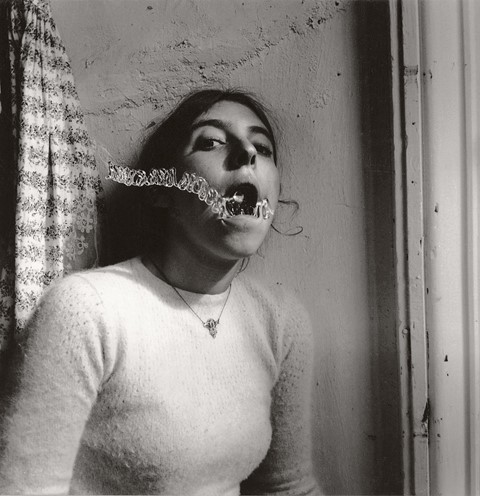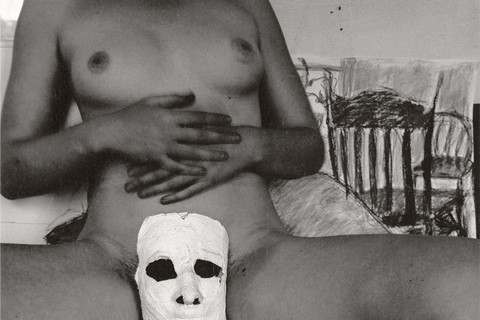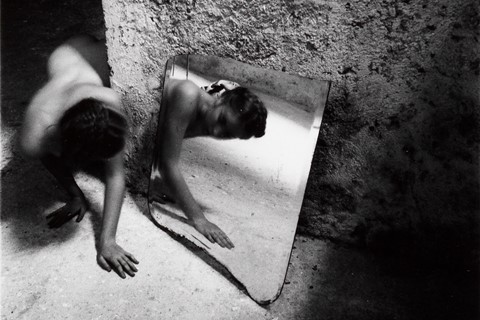A new show in Vienna offers an insight into the hauntingly expressive world of one of the 20th century’s most enigmatic figures in feminist avant-garde photography
Drawn from the largest collection of her work outside her estate in New York, Francesca Woodman: Works from the Verbund Collection at Albertina Museum in Vienna offers an insight into the hauntingly expressive world of one of the 20th century’s most enigmatic figures in feminist avant-garde photography. “There’s a sense of urgency and authenticity in Francesca Woodman’s work that speaks directly to younger generations, particularly in an age where identity and self-image are constantly negotiated,” says Dr Ralph Gleis, director of Albertina. Woodman’s exploration of the self – fragmented, obscured, in flux – offers a powerful counterpoint to the hyper-visible, digitally constructed identities of today. In her work, vulnerability becomes a form of resistance, and the body a site of both disappearance and presence. The desire to return to analog, too, offers a mindful and inquisitive alternative to today’s homogeneous, fast-paced society.
Woodman’s deeply personal, often surreal imagery has left a lasting impact on a younger generation of artists including Cindy Sherman, Sophie Calle, Ana Mendieta, and fashion designer Simone Rocha. With nearly 100 works – including 20 prints developed by the artist herself – her acclaimed artist book Some Disordered Interior Geometry, postcards, letters, and rare forays into fashion photography, the exhibition offers an unusually rich and intimate look at the full scope of Woodman’s creative vision.
Woodman’s international recognition came posthumously, following her death in 1981, when she jumped from the window of her New York apartment. “Her work is extraordinarily compelling because of its emotional depth, visual poetry, and conceptual sophistication – all the more remarkable considering the brevity of her career,” says Dr Gleis. Spanning just nine years (1972-1981), Woodman produced over 800 black-and-white photographs, a testament to film’s enduring soul.
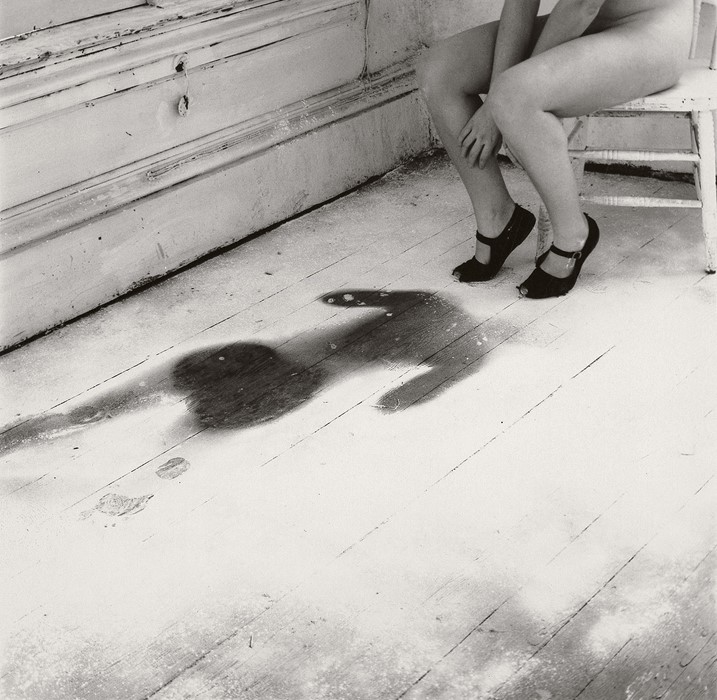
This exhibition steers away from the often-invoked narrative that links Woodman’s final works to her suicide, instead turning its focus to the foundations of her artistic practice. “The fleeting glimpses of the female body, occasionally disappearing behind peeling wallpaper, have been interpreted in relation to her early death at the age of just 22,” says Gabriele Schor, curator of the exhibition and director of the Verbund Collection. “By contrast, this exhibition seeks to read Woodman’s work not from the end of her productive period, but from its beginning.” Rather than approaching her artistic practice through a psychological lens, Schor emphasises a deeper interest in Woodman’s aesthetic strategies. “I don’t like to interpret a work from a psychological point of view,” she says. “It’s more exciting for me to uncover the artistic methods she used. I’m fascinated by her trinity of the female body, props, and staged space.”
Woodman was born into a family of artists, first exploring various creative mediums as an adolescent. Living between the US and Italy throughout her lifetime, she encountered Renaissance art at an early age and sketched copies of the paintings of Old Masters in the museums of Florence. She was first introduced to photography at Abbot Academy in Massachusetts by her mentor and professor, Wendy Snyder – a discovery which marked a turning point in Woodman’s artistic trajectory. “Her early photographs herald a concern with the dynamic relationship between the female body and the space that surrounds it, to which she will return obsessively over the following years,” Schor explains. Woodman began to manually develop the numerous photographs she took during these years in a makeshift darkroom. “She always shoots in natural light – where she stages her own body and places it in unconventional relation to existing features of the rooms,” says Schor.
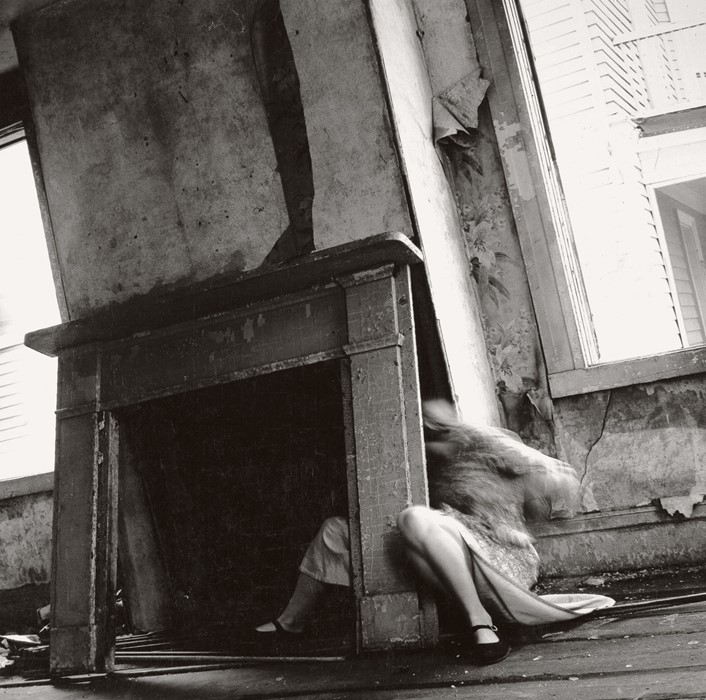
At the outset of the exhibition, a 1972 self-portrait taken when Woodman was just 13 years of age hangs on display. Using a cable release to photograph herself in her parents’ house in Antella, Italy, with her face turned away from the camera, with this image “Woodman marks the beginning of her artistic life’s work,” Schor says. Space as Stage Set, which features architectural interiors as theatrical environments and Female Body – Props, where body and object act as expressive tools, make up the second and largest room of the exhibition. These photographs were produced during Woodman’s studies at RISD, where, at the young age of 17, she worked between the US and Italy. Much of her early experimentation unfolded in her studio at Pilgrim Mills, a former textile factory in Providence.
To Schor, Woodman “takes what we conventionally understand as space – right angles, surfaces, parallels – and sets it in opposition to her own perception.” Throughout her practice, she utilises defining props including glass, plastic foil, wallpaper, plants, taxidermy and animals, putting them in dialogue with her body and to heighten the ephemerality of analog photography’s long exposure.
The following rooms explore Woodman’s formative year in Rome and her deep engagement with art history. Immersed in Surrealist literature and the Italian avant-garde, she created performative works that draw on a rich visual repertoire, from Renaissance masters to mythological and religious imagery, recast through a poetic, feminist lens.
The exhibition concludes by encapsulating Woodman’s late years in New York from 1979, where she created her final body of work in her apartment, a converted bathroom acting as a makeshift darkroom. In 1980, she attended the artist residency at MacDowell Colony in Petersburgh, New Hampshire, where Schor says she “develops a series of photographs that combine the female body with natural objects, addressing mythological themes.”
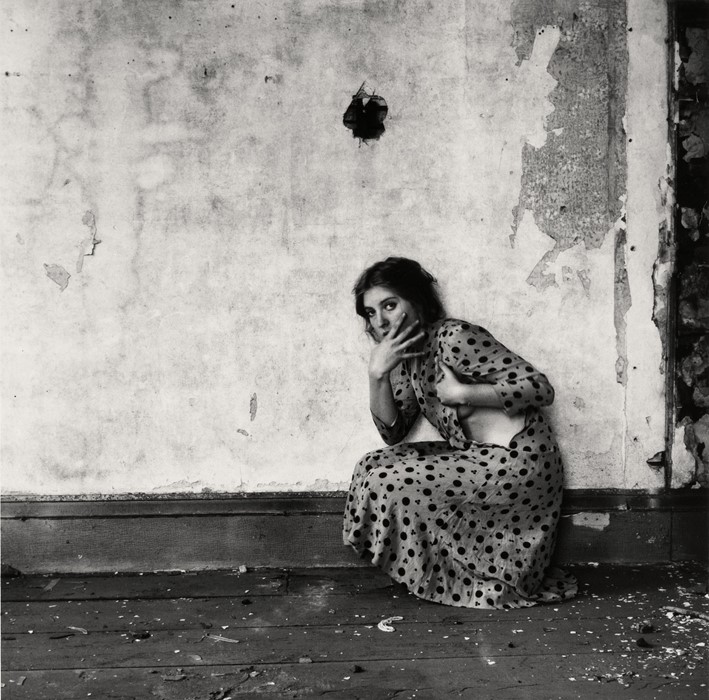
Shortly after Woodman’s death in 1982, her book, Some Disordered Interior Geometries, was published. Schor explains that the exercise book consists of “an introduction to Euclidean geometry,” which is to say, an exposition of the familiar geometry of the plane and three-dimensional space.” It explores subjective, disoriented spatiality that reflects an internal, non-Euclidean experience of the body and its environment.
Schor points out that one of Woodman’s last photographs shows a portrait of the artist with her birth certificate positioned in the background, “as if wanting to say: look at my work not from the end, but from the beginning.” Shaped by a leading female artist uniquely attuned to the fleeting nature of time, the exhibition comes full circle. Reflecting on the urgency of her artistic oeuvre, Dr Gleis says, “Woodman’s photography is deeply personal, yet speaks to universal questions – of identity, the body, presence and absence. Her experimental approach and her engagement with space, movement, and time expands our understanding of what photography can be.”
Francesca Woodman: Works from the Verbund Collection is on show at Albertina Museum in Vienna is on show until 6 July 2025.
